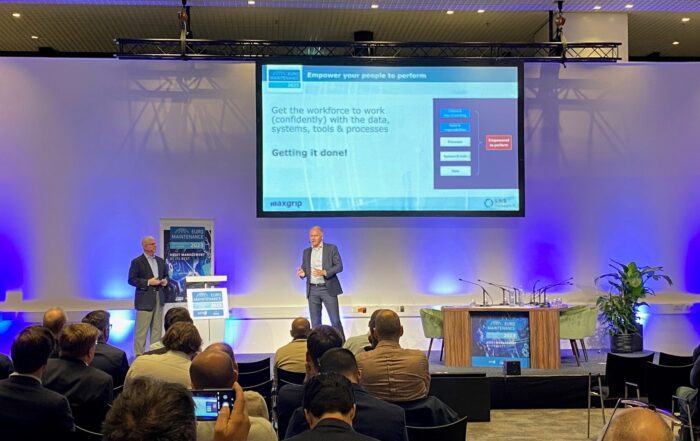A multinational Oil & Gas company produces oil and gas from more than 50 fields in sea. Production from the field, 210 km from main land, is processed through a Floating Production, Storage and Offloading (FPSO) vessel. The company purchased the FPSO from another company and then faced the challenge of incorporating the new asset according to the company’s standards as quickly and efficiently as possible. MaxGrip was asked to carry out the process.
The FPSO was originally built as a tanker. It can produce 45,000 barrels of oil a day and store up to 560,000 barrels. The conversion took place in 1997 and strange as it may sound for a vessel moored at sea, that makes it a typical ‘brownfield’ asset. In order to guarantee asset safety and integrity, the company adheres to strict house rules when it comes to the adoption and incorporation of new production facilities. Even before the purchase, it was clear that this would become a complex and lengthy process.
Case study – highlights
Bills of Materials and Spares
An important part of the overall scope was collecting and processing all relevant data on materials and spare parts. The (re-)structuring of the Bills of Materials (BoM’s) and defining of all Spares was needed to link each item to the correct functional location in the software system. This process ensures compliance with safety legislation and the company’s own requirements, as well as a smooth transition and efficient future operations, including maintenance work.
Smart solution
We came up with the idea of using the software system that the company deploys for greenfield developments and tailor it to the brownfield requirements of this project. By using our own database as a bridging tool, we were able to create the files for mass uploads to the software and save lots of valuable time.
Data collection
Before making all data available in SAP via the software, MaxGrip had to collect them from various sources. The history of the FPSO meant that information had to be gathered not only at the shipyard that built the original tanker, but also at many other companies that have since worked on the conversion, adaptations, repairs, and maintenance. To create a complete picture, data were collected from archived product sheets, purchasing orders, engineering spreadsheets, supplier manuals and contracts. The project covers a total of 28,000 pieces of equipment on the FPSO, each of which can contain over 500 parts.
Results
MaxGrip realized 400% in data upload speed increase. The detective work and the smart uploading were completed within nine months.
An impressive feat by any standard, as was confirmed by a company’s specialist: “If we would have done this by the original process, it would have taken us four years.”
Get inspired
MaxGrip played a large part in the program with two keynotes and five workshops with Waternet, ONE-Dyas, TenneT, Victrex, LNS Research and IFS Ultimo.
MaxGrip's strategic approach to asset management maturity involves aligning organizational goals, enhancing data and system integration, and emphasizing process efficiency and human resource empowerment for effective and continuous improvement in asset performance management.
Collecting proper failure codes leads to more sophisticated maintenance, and ultimately, increased savings.





